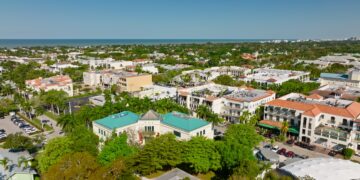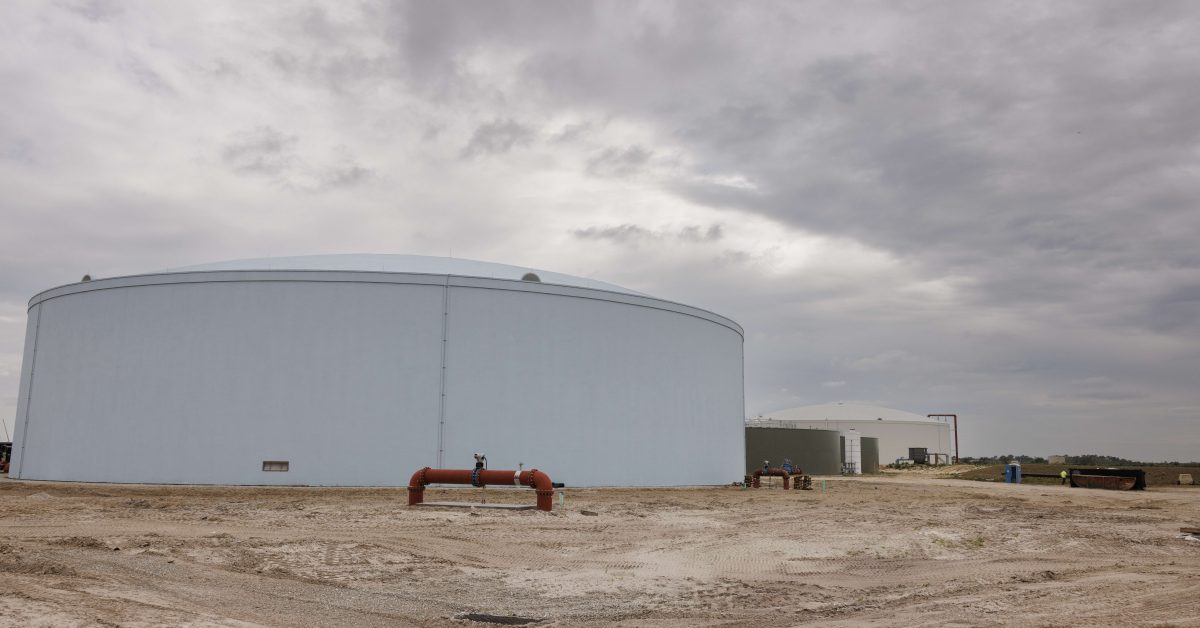For 15 years, the Lee County Commission refused to even consider a lime rock mine in the southeast part of the county. The mine would be smack dab in the middle of the Density Reduction/Groundwater Resource area in Estero, a special area of concern whose designation was applied to most of southeast Lee County in 1990—to protect the area’s shallow aquifers by limiting development in the precious habitat.
Mining the rock, which is used in road construction, piers and other large engineering projects, would have meant 1,100 dump trucks a year on Corkscrew Road. That’s one every 90 seconds, carrying 10 million tons of limestone from the mine each year. A judge reviewing the project said mining would rely on blasting the rock from the earth while dewatering a rich ecosystem that for tens of thousands of years has depended on the uninterrupted flow of groundwater.
The county has repeatedly refused to even process the mining permit application since 2007, when it was launched. After years of denials, the new owners, Corkscrew Grove Limited Partnership, asked a judge to intervene. The court agreed the landowners had a case under the Bert Harris Jr. Act, which meant the county might have to pay the mining company $63 million in unrealized mining profits. The court also ordered the county to process the mining application.
Lesser of two evils?
Instead of paying the fine or allowing the mine, the Lee County Commission last June signed a settlement agreement giving Corkscrew Grove permission to build a large planned community on the sensitive land. The project, known as Kingston, includes 10,000 homes, some 240 hotel rooms, private and public schools, roads, sidewalks and parking lots, as well as the construction of wireless communications and other infrastructure.
Though the agreement was the subject of three public hearings, one before a hearing examiner and two before the county commission, Kingston bypassed approval under the county zoning process and was not reviewed and adopted through the comprehensive plan process—and is not consistent with the Lee County Comprehensive Plan.
“After the Bert Harris Act challenge and win by the property owner, it was out of the county’s hands at that point,” says John Cassani of Calusa Waterkeeper. The organization monitors the impact human development has on the Gulf, rivers and other natural water sources. “It evolved into a court-mediated settlement agreement that bypassed all the County planning requirements.”
Lee County had lost a years-long battle that serves as a model for what is happening east of Interstate 75 throughout Southwest Florida. Lee is not alone; as developers win approval to build large planned communities east of I-75 and into the Everglades, Southwest Florida counties and municipalities must drill more wells, build new wastewater treatment facilities or upgrade existing water infrastructure to meet demand.
Larger water infrastructure
“Typically, there’s a development review process,” says Pam Keyes, Lee County’s utilities director. “This one was such a surprise to us; it came up less than a year ago. We had to pivot to expand our capacity.”
This is not to say Lee County was caught flat-footed, Keyes said. The county’s capital improvement plan, based on a 10- to 30-year window, predicts where water infrastructure will be needed to support new development.
“We already had plans to build a water reclamation facility; we worked with Kingston on a schedule to get the plant built in time for that development,” Keyes says. “The project will provide the county with a 6-million-gallons-per-day advanced water reclamation facility that can be expanded to 10 million gallons per day or greater, if needed.”
Keyes and county engineers began meeting with Kingston developers some months ago, and continue to communicate via email and phone on almost a daily basis. A full team of engineers and environmental scientists briefed the developers on how the thousands of homes would affect the county’s water system.
Coming online
Developers of Kingston and other communities—not the county—fund and install residential pipes and water lines, lift stations, pumps and other water infrastructure for their planned communities.
“The developers build the infrastructure they need and contribute that infrastructure to us at the end of their project,” Keyes says. “The lines, lift station, they are responsible for building those and other components.”
Within the southeast area, the new developments will be serviced by three water treatment plants: Pinewoods, Green Meadows and Corkscrew Water Treatment, with interconnected distribution systems. Each plant has a dedicated wellfield with diverse-source water.
Lee and Collier counties also must ensure developers do what they promise to do when given permission to build on environmentally sensitive land: Protect water quality and ensure the free flow of water into precious wetlands, protect large animal corridors and limit water they take from the aquifer.
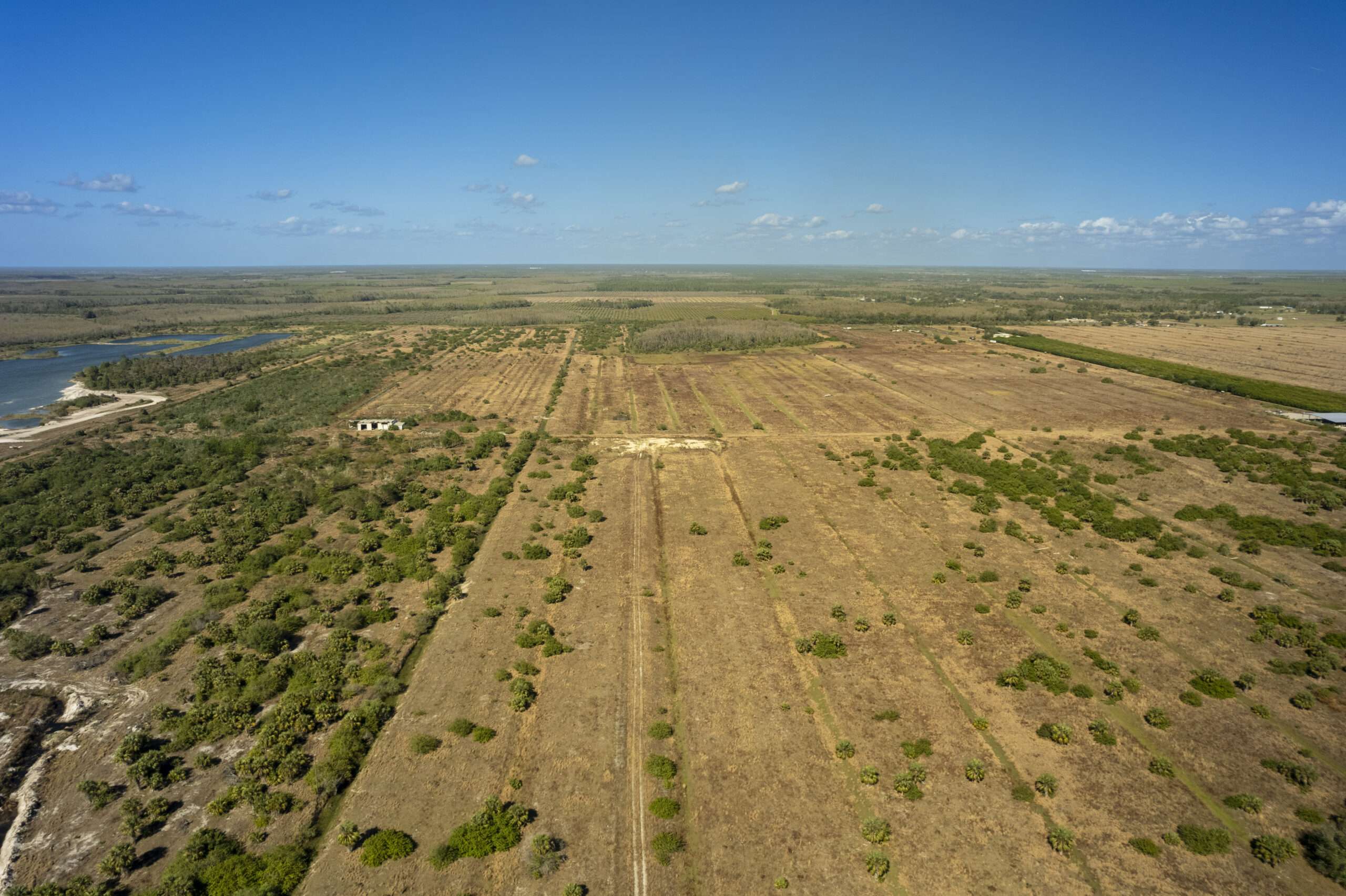
Rare habitat
Collier County has been expanding its water and sewer infrastructure to support the construction of thousands of homes in three planned communities. Collier Enterprises, owned by the family for whom the county is named, wants to complete the Town of Big Cypress and neighboring villages of Rivergrass, Longwater and Belmar inside the county’s Rural Lands Stewardship Area, or RLSA.
The Stewardship Area contains 300 square miles of agricultural and environmentally sensitive lands and is a hot spot for ecological diversity, according to the Conservancy of Southwest Florida, which monitors development in Collier and Lee. April Olson, senior planning specialist for the Conservancy, said three-fourths of the Stewardship Area lies in primary panther zone habitat, which supports the state’s only breeding population of panthers.
Like Lee County, Collier planned ahead by launching its Northeast Service Area project in 2019, which includes the construction of pipelines and treatment facilities, storage tanks and associated pipelines to provide potable water and irrigation quality water to a growing population. Construction continues into 2023. The new infrastructure will serve the entire county, not just the planned communities.
“The NESA facility has been in planning for more than a decade; all our facilities are for use in the entire county,” says Evelyn Longa, spokesperson for Collier County Utilities.
Though Collier Enterprises promises on its website to preserve 12,000 acres of environmentally sensitive land, reestablish historic waterways and restore critical wildlife corridors, Rivergrass alone is a 1,000-acre community of up to 2,500 homes, an 18-hole bundled public golf course and 62,500 to 80,000 square feet of neighborhood-scale retail and office uses, as well as at least 25,000 square feet of civic, government and institutional space. That’s substantial.
“I am concerned about the Rivergrass application,” says John Cassani of Calusa Waterkeeper. “Specifically, water quality and supply issues are becoming more severe in Southwest Florida now than in the past. We are not keeping up with the effects of development on water quality. For every pound of pollutants, it’s continuing to get worse.”
Collier County Commissioner Bill McDaniel, in whose district the communities will be built, says county staff step in when developers fail to do what they promise.
“We have county staff that regularly monitor these development agreements, tracking measurables and milestones,” McDaniel says. “Not only that, developers are required to hire third-party consultants to help them monitor and manage their own agreements.”
He’s familiar with the balance between landowner rights and protecting legacy environments that can’t be replaced.
“We have very progressive land management plans for the eastern part of the county,” he says. “That is to preserve and protect enormous amounts of environmentally sensitive lands. One way to do that is with our Rural Fringe Program.”
The county program directs development away from sensitive lands by allowing landowners to transfer their development rights to areas where development is more suitable.
“Landowners have property rights, and this provides for a transfer of those rights to less environmentally sensitive lands,” McDaniel says.

Waterflow effect
Collier has not determined whether its aquifer can handle the large population, Olson said.
“Developments, particularly those proposed in wetlands, have the potential to impact water resources through loss of aquifer recharge, loss of floodplain storage and loss of habitat,” she says.
The Conservancy recommended that each town and village should provide a Flow-way Management Plan to address any effects to wetlands and flow-way systems. For instance, interrupting water flow or allowing parking lot runoff to enter streams injects carbon monoxide, fossil fuel and other pollutants into sensitive wetlands. And developers can’t simply block creeks and streams by filling and landscaping.
“Even though county staff recommended flow management plans in 2018, Collier County, unfortunately, did not adopt such a requirement during the recent (Stewardship Area) amendment process,” Olson says.
Elected officials try to find a middle way to provide water to new homes while protecting the irreplaceable environments that draw people here in the first place. It’s not an easy thing to do.
“Our efforts to meet the demands of growth require both individual focus (and) also a realization that all the sectors must coalesce as one,” says Lee County Commissioner Ray Sandelli. “Water, infrastructure, utilities, schools, green space, are among the key fundamentals of creating new communities.”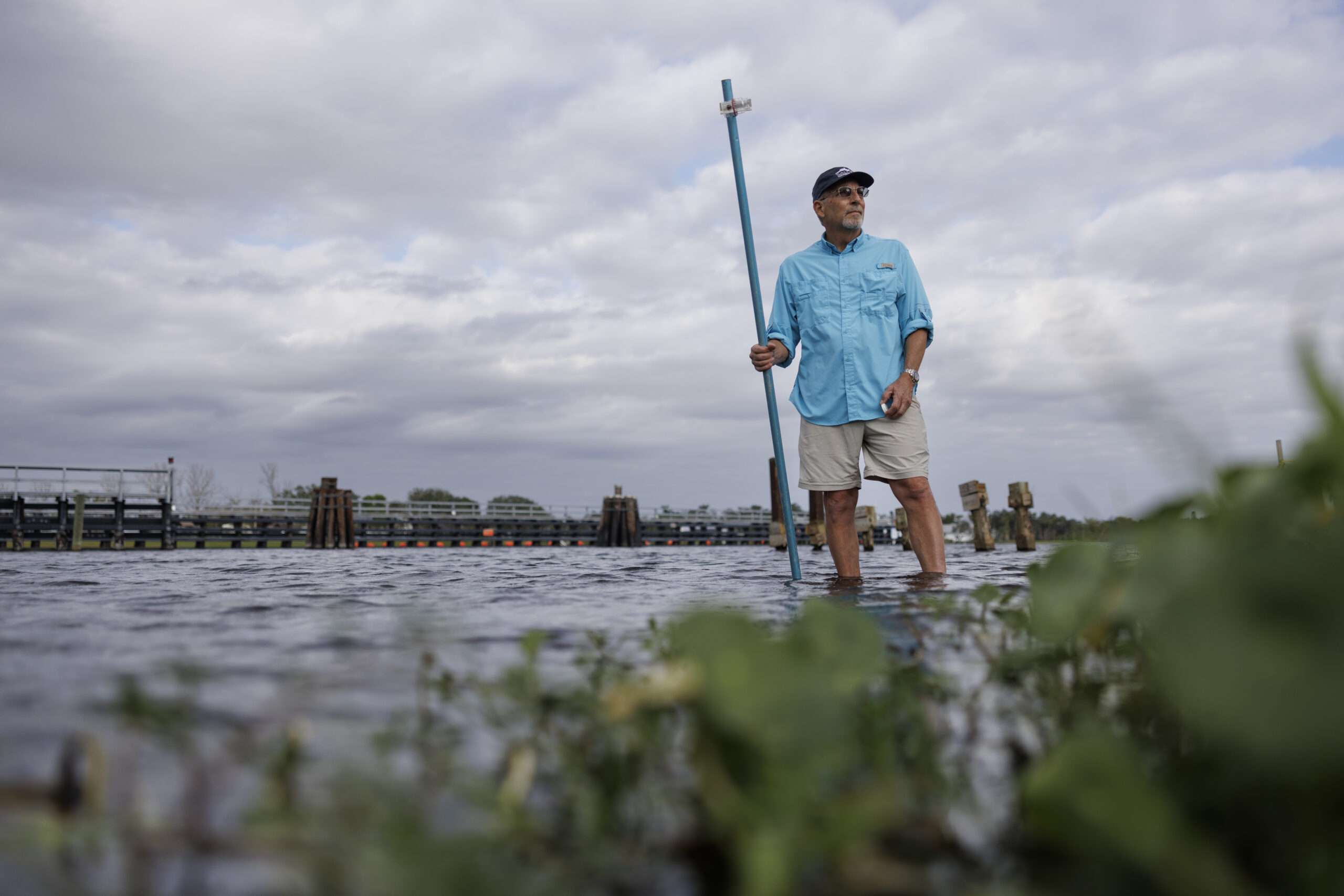
Promised Protection
The settlement agreement between Lee County and the company building Kingston requires the builders to mitigate the destruction of sensitive habitats in the county’s Density Reduction/Groundwater Resource area in Estero, an area of special concern. The DR/GR designation was applied to most of southeast Lee County in 1990 to protect the area’s shallow aquifers by limiting development there.
The 6,676-acre property is also contiguous to Collier County conservation lands to the south and east and Lee County’s Imperial Marsh Preserve to the west. The settlement agreement of June 2022 requires the developer to:
- maintain 61% open space when finished;
- restore and conserve 3,287 acres under a recorded conservation agreement at no cost to Lee County taxpayers;
- restore wetlands and large animal corridors, and re-create the historic flow-ways from the northern property line to its discharge in the Audubon Corkscrew Swamp Sanctuary, as well as surrounding conservation lands;
- limit what it draws from the aquifer to 9.9 million gallons of water a day—that represents a 77% decrease in what is permitted, according to planners;
- reduce nitrogen in the water by 49% and phosphorus by 80%;
- build a spine road to mitigate damage to county roads, and pay its share of county road improvements; and
- build a hydraulic connection to alleviate historical flooding of the Wildcat Farms properties.
John Cassani, known throughout Florida as the Calusa Waterkeeper, created an organization of the same name that monitors the damage developments visit on the health of the region’s streams and wetlands. He told the court weighing the settlement agreement that he does not believe developers can keep their word.
“Stormwater runoff discharged from [Kingston] and proposed to be permitted through Lee County’s stormwater program gives no assurance that state water quality standards will be met,” Cassani says. He provided a study indicating pollutants from Kingston will enter the Corkscrew Regional Ecosystem Watershed, and, ultimately, the Imperial River and Estero Bay. “This will further degrade downstream water resources,” he says.
He told Gulfshore Business that groundwater in the DR/GR is already reduced. “The development will also consume large volumes of groundwater on-site, mostly for lawn irrigation,” he says. “That region of the county is already experiencing a downward trend in groundwater elevation.” On the other hand, Lee County said it adds lands to its protected acreage. In 2017 the county bought the Larry Kiker Preserve for $42.4 million. The land, adjacent to Hidden Cypress Preserve, is among lands maintained by the Corkscrew Regional Ecosystem Watershed. The land includes habitat for listed species such as the Florida panther and the wood stork, said Lee County spokesperson Betsy Clayton.
The Kingston developer wrote that not everyone is opposed to the project. “Some residents are resigned to the fact that the area is growing rapidly, and new development is inevitable,” reads an editorial on Gulf Coast Florida Homes’ website. “Cameratta Companies have already shown their ability to responsibly create new home communities in the area, like Verdana Village and The Place, among others.” But Cassani doesn’t want a repeat of what happened to Spring Creek, a stream designated worthy of special protection because of its outstanding natural state. In spite of promises from developers, runoff from parking lots and residential streets and other pollutants ruined Spring Creek’s pristine water. Spring Creek is impaired now for nutrient pollution, and there is no restoration program proposed that defines how much the polluter has to reduce its loading.
“The development is no longer in compliance,” Cassani says. “The state does not require compliance unless a restoration plan is in place. There is no mitigation plan.”
April Olson of the Conservancy of Southwest Florida also doubts developers and Collier County officials can prevent the harmful effects of three large housing/retail developments in the Rural Lands Stewardship Area. The area, like Lee’s DR/GR, is an area of special concern. The area is home to eight federally listed species, including the endangered Florida panther; it provides important habitat connections to Florida Panther National Wildlife Refuge and Big Cypress National Preserve.
“We did raise concerns with Collier County that the county has not demonstrated to the public how the plan will affect Collier County’s water supply or water quality,” Olson says. “The planning area allows 45,000 acres’ worth of town and village development, which is the geographic size of Washington, D.C.”
Collier County Commissioner Bill McDaniel says county staff visit the construction sites to ensure compliance. Developers are required to hire third-party consultants who see whether burrowing owls, gopher tortoises or other endangered wildlife are on the site.
McDaniel, who has experience developing land in Collier, says, “There were third-party environmental experts I would hire to ensure our permits were proper. The county does that, as well.”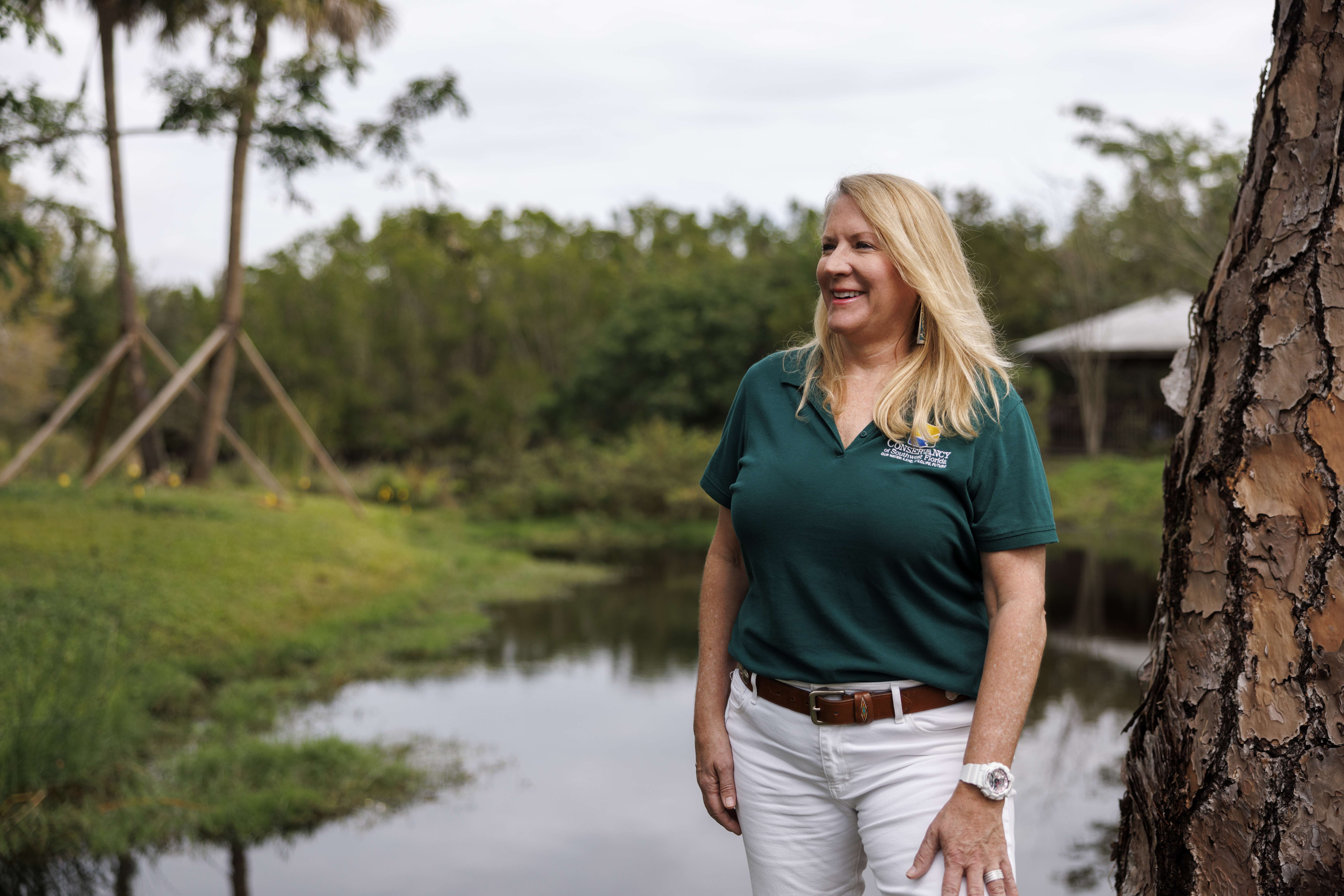
Fixing Fort Myers’ Water
In addition to creating water capacity for new development, older cities such as Fort Myers must ensure they produce enough water for growing populations. After years of falling water pressure brought on by new development and an aging infrastructure, Fort Myers came under state mandate to fix its water system by 2024. It must drill 11 more wells and make other improvements to ensure there is enough water for new development in the city.
“Over the decades, the infrastructure wasn’t fixed to keep up with population and growth,” says Liz Bello-Matthews, public information officer for the city of Fort Myers.
After the Florida Department of Environmental Protection banned the city from issuing general permits on water mains, the city notified developers that though they can obtain permits for new connections to the city’s water system, water flow might not be available.
“The Department of Environmental Protection and the Department of Health are concerned that with the growth in the city and the number of development projects permitted in recent years that the city may not be able to meet the water demand generated by these projects without additional wells,” the official letter reads.
The consent order, which was signed by Mayor Kevin B. Anderson in September, requires the city to hire engineering consultants in order to determine what needs to be done to improve well and storage capacity to meet the average daily water demand, including enough water pressure for firefighting from fire hydrants and other sources. The city can be fined up to $1,000 a day if it fails to satisfy the order’s requirements—adding two new wells and well-pumping equipment by March 31, 2023; two by Dec. 31, 2023; and five remaining wells by Sept. 30, 2024. The work so far already is improving water pressure, Anderson told WINK News. The city’s utility director agrees.
“Since May 9, we’ve added three wells at a half-million gallons a day,” Utility Director Richard Moulton tells Gulfshore Business. “We should have the fourth one cleared by the FDEP by early next year. We will have 11 wells total, including those four by the end of 2023. That will allow us to outperform our growth projections as we are today, and put us in a better position to address some of the needs that developers will have for additional water resource in the next year or so.”
Hurricane Ian didn’t do the city any favors.
“We’ve made great strides since Ian, which presented a number of leaks in the distribution system,” Molten says. “Falling trees uprooted service lines and caused breaks to the water lines. During the post-Ian period of Sept. 30 to Oct. 12, we were lucky in that we had help from other municipalities; they helped us locate and repair 42 major water leaks in that time. Since then, our system has really allowed us to increase our water tank levels. We are full around our tanks.”
The city has since returned to a healthy average water pressure of 52 pounds per square inch.
“We have not really had many pressure complaints over the last two months,” he says.


